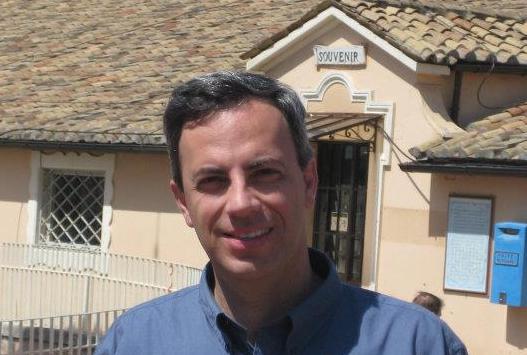
Danor acknowledges certain challenges of race and priesthood that young Black men face when joining the Church. In a private and personal way, he learned that not all past issues need justification if you know the reality of God.
One day early in his investigation into the Church, he told a friend that what the missionaries were teaching felt right to him. He felt something whispering to him that this was what he was looking for. He later learned about the Holy Ghost and was baptized and confirmed.
He soon heard criticisms over past priesthood issues and was shocked. Wondering about the reasoning, he prayed to understand. Seeking the Lord’s voice, he wondered, “Am I not good enough [to hear]?”
In time, “I did hear His voice,” he said. “It was the most beautiful, soft, amazing thing.” To verify what he heard, he asked again. “Yes, my son,” he heard in response.
“I know I’m a son of God, and I know He loves me more than I can stand,” he said. “I don’t need justification for the past. … All I want is a personal relationship [with God].”
Race and the Priesthood
In theology and practice, The Church of Jesus Christ of Latter-day Saints embraces the universal human family. Latter-day Saint scripture and teachings affirm that God loves all of His children and makes salvation available to all. God created the many diverse races and ethnicities and esteems them all equally. As the Book of Mormon puts it, “all are alike unto God.”
The structure and organization of the Church encourage racial integration. Latter-day Saints attend Church services according to the geographical boundaries of their local ward, or congregation. By definition, this means that the racial, economic, and demographic composition of Latter-day Saint congregations generally mirrors that of the wider local community. The Church’s lay ministry also tends to facilitate integration: a black bishop may preside over a mostly white congregation; a Hispanic woman may be paired with an Asian woman to visit the homes of a racially diverse membership. Church members of different races and ethnicities regularly minister in one another’s homes and serve alongside one another as teachers, as youth leaders, and in myriad other assignments in their local congregations. Such practices make The Church of Jesus Christ of Latter-day Saints a thoroughly integrated faith.
Despite this modern reality, for much of its history—from the mid-1800s until 1978—the Church did not ordain men of black African descent to its priesthood or allow black men or women to participate in temple endowment or sealing ordinances.
The Church was established in 1830, during an era of great racial division in the United States. At the time, many people of African descent lived in slavery, and racial distinctions and prejudice were not just common but customary among white Americans. Those realities, though unfamiliar and disturbing today, influenced all aspects of people’s lives, including their religion. Many Christian churches of that era, for instance, were segregated along racial lines. From the beginnings of the Church, people of every race and ethnicity could be baptized and received as members. Toward the end of his life, Church founder Joseph Smith openly opposed slavery. There has never been a Churchwide policy of segregated congregations. (Read the rest of this article on ChurchOfJesusChrist.org)
OTHER LDS VIDEOS
Watch LDS Video: I Didn’t Feel Good Enough, But I Was Good Enough for God | His Grace
August 22, 2021In his moment of greatest anguish, Drew felt heaven’s peace. He learned that God knew him. Drew was raised in a typical member home where he was taught to obey and …
HOPE WORKS: I Told Myself I Would Never Become Depressed
Challenging experiences in life changed how Julie saw the world as either black or white, good or bad. She now views others in high-definition color, more as Jesus does, with possibilities for infinite potential. Growing up, Julie says her view of life was simply a…
Elder Ulisses Soares: I “Hear Him” by Aligning My Mind with His Will
Ulisses Soares: Quorum of the Twelve Apostles Elder Ulisses Soares tells how the Lord directed him in a strong, firm voice what to teach the missionaries. He felt the Savior speak to them. After, they sat silently, reflecting on the instruction. I Hear Him by Teaching…
How I #HearHim video: Act Upon Impressions – President Dallin H. Oaks
President Dallin H. Oaks says that the Lord can bless us and bless others if we #HearHim.
Watch Video: What is Revelation? | Now You Know
Just as God revealed His will to ancient prophets now recorded in the Holy Bible, He reveals His will today to modern-day prophets. To those who seek Him, He inspires with personal revelation to know His plan for them. Do you wonder how we know about God? Does God…
April 2021 Video World Report of The Church of Jesus Christ of Latter-day Saints
The latest edition of The World Report, a biannual compilation of news from The Church of Jesus Christ of Latter-day Saints, is now available. The April 2021 edition shows how Latter-day Saint Charities, the humanitarian arm of the global faith, is reaching people…
BYU Speeches: Wrestling with Comparisons by J.B. Haws
Life is not a race and treating it this way will stunt our spiritual growth. The only comparisons that we need to make are those with our past self. If you don’t mind someone who speaks very fast, this is a really great talk about a challenging topic: wrestling…
Watch Video: 3-year Ministry of President Russell M. Nelson
A new Church News video, titled “The First Three Years,” highlights the ministry of President Russell M. Nelson, 96, who was set apart as the 17th President of The Church of Jesus Christ of Latter-day Saints on January 14, 2018.
Watch Video: Does God Have a Plan For Me?
When her mother became ill, Renu Singh needed answers and began seeking truth and understanding from various churches in India. She was introduced to the Church and met missionaries who helped her learn about God’s plan of salvation.
Elder Jeffrey R. Holland: To “Hear Him” Is the Essence of the Restoration
At the heart of the “Hear Him” message is the Restoration of the gospel and that the heavens are opened for the final dispensation. The First Vision in 1820 was an introduction for Joseph Smith to hear the voice of Jesus Christ. “Hear Him” 200 years later, in 2020, is…

Trackbacks/Pingbacks